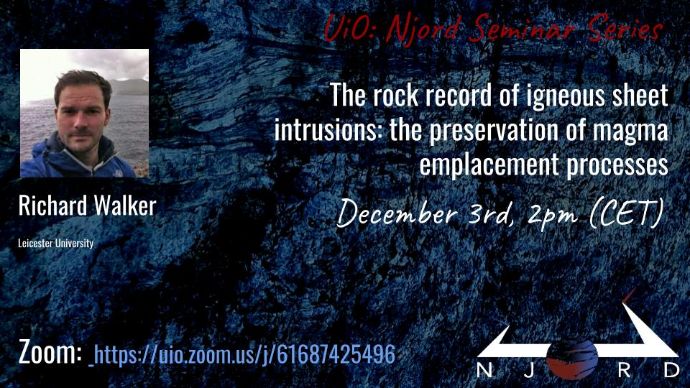Abstract:
Field observations of igneous sheet intrusions have been critical in developing our understanding of intrusion growth processes. Yet, intrusions preserved in the rock record represent a magma that stalled in the crust: intrusion dimensions and host rock deformations are representative of an arrested system, and may not necessarily be indicative of growth.
Sheet intrusion growth has classically been considered in a linear elastic fracture mechanics (LEFM) framework, in which growth occurs when the stress intensity factor K_I at the tip reaches the fracture toughness KIC of the host rock. LEFM crack scaling models ubiquitously assume that the internal pressure is constant. Applying this assumption to intrusions gives KIC=300 to 15,000 MPa √m, which is about 100–10,000 times that of rocks at upper crustal depths.
Here we revisit the assumptions of dike scaling laws, reapplying principles of kinetic (viscous) and fracture controls on crack growth to produce a “new” two-stage numerical model for dike growth, including a volumetric growth stage, and a pressure relaxation stage. For cracks in 2D, we find that intrusion scaling in non-equilibrium growth is controlled by the growth rate, effective (2D) host rock modulus, and magma viscosity. Volumetric growth results in increasing length and thickness, whereas pressure relaxation serves to increase dike length, but at the expense of dike thickness. Relaxation would continue to a fully equilibrated (constant) pressure were it not for solidification in the conduit. We show that dikes do not occupy the same T-L scaling continuum as other fracture types (veins, sills, etc.), and the conditions of individual dike systems are sufficiently variable that no two systems are likely to follow the same scaling trajectory. We tentatively link these growth and relaxation stages to geophysical observations of active intrusions, and to examples of sheet intrusions in the field which preserve late-stage viscous-controlled growth and arrest.
You will find the complete schedule for Njord Seminar Series fall '21 here.
To get news, invitations to seminars and more from Njord, please go here to subscribe to our newsletter.
